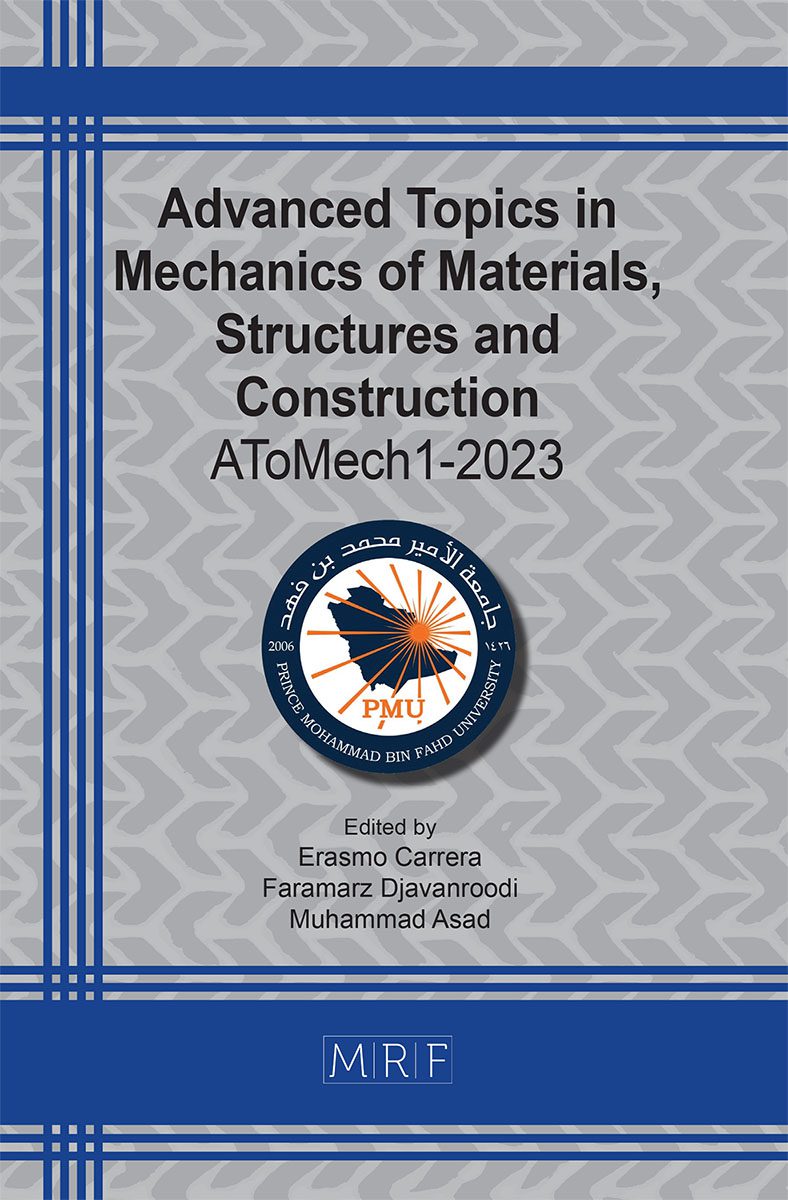Characteristics of electrorheological fluids under single and mixed modes
Ali K. El Wahed
download PDFAbstract. This paper is concerned with an experimental assessment of the rheological performance of Electrorheological (ER) fluids when utilized under single and mixed modes of operation. The experimental facility, which incorporated a dedicated ER cell, was developed to enable the instantaneous measurement of the mechanical and electrical responses of the ER fluid. The ER cell comprises a cylinder, which provides the reservoir for the ER fluid, and a piston. The cylinder is subjected to an oscillatory sinusoidal motion while the piston is fixed. The current ER cell was designed to permit the ER fluid, which is sandwiched between its cylindrical and circular gaps, to be energized either separately or simultaneously to simulate the fluid operation under either a single shear or a single squeeze or a mixed shear and squeeze modes, respectively. The transient rheological characteristics of the fluid were determined for various mechanical and electrical input conditions, which were done using a combination of displacement, force, velocity and acceleration transducers. The results have shown that the force transmitted across the fluid in squeeze is greater than that transmitted when the fluid is in shear. However, the transmitted force level was further enhanced when the fluid was utilised under mixed shear and squeeze mode of operation. In addition, the implications of the results to vibration control, where the ER fluid is employed in an engine mount, are discussed.
Keywords
Electrorheological Fluids, Mode of Operation
Published online 8/10/2023, 9 pages
Copyright © 2023 by the author(s)
Published under license by Materials Research Forum LLC., Millersville PA, USA
Citation: Ali K. El Wahed, Characteristics of electrorheological fluids under single and mixed modes, Materials Research Proceedings, Vol. 31, pp 7-15, 2023
DOI: https://doi.org/10.21741/9781644902592-2
The article was published as article 2 of the book Advanced Topics in Mechanics of Materials, Structures and Construction
![]() Content from this work may be used under the terms of the Creative Commons Attribution 3.0 license. Any further distribution of this work must maintain attribution to the author(s) and the title of the work, journal citation and DOI.
Content from this work may be used under the terms of the Creative Commons Attribution 3.0 license. Any further distribution of this work must maintain attribution to the author(s) and the title of the work, journal citation and DOI.
References
[1] Winslow, W. M., 1949, J. of Applied Physics, Vol. 20, pp. 1137-1140.https://doi.org/10.1063/1.1698285
[2] Block H. and Kelly J. P., 1988, J. Phys. D: Appl. Phys., Vol. 21, pp. 1661-77.https://doi.org/10.1088/0022-3727/21/12/001
[3] Gamota, D. R., Wineman A. S. and Filisko F. E., 1993, J. Rheol. Vol. 37, pp. 919-33.https://doi.org/10.1122/1.550403
[4] Wen, W.J., Huang, X.X., Yang, S.H., Lu, K. and Sheng, P., 2003, Nature Materials, Vol. 2, pp. 727.https://doi.org/10.1038/nmat993
[5] Dhar, J., Bandopadhyay, A. and Chakraborty, S., 2015, J. Non-Newtonian Fluid Mechanics, Vol. 223, pp. 165-175.https://doi.org/10.1016/j.jnnfm.2015.07.001
[6] Sun, W., Zheng, H., Ma, J., Xi, Z., Wang, B. and Hao, C., 2020, Colloids and Surfaces A: Physicochemical and Engineering Aspects, Vol. 601, art. no. 125055.https://doi.org/10.1016/j.colsurfa.2020.125055
[7] Stanway, R., Sproston, J.L. and El Wahed, A.K., 1996, Smart Materials and Structures, Vol. 5, pp. 464-482.https://doi.org/10.1088/0964-1726/5/4/011
[8] Choi, S.B. and Gołdasz, J., 2018, In Proceedings of the ACTUATOR 2018 – 16th International Conference on New Actuators, Bremen, Germany, 25-27 June 2018; pp. 1-9.
[9] Helal, A., Qian, B., McKinley, G.H. and Hosoi, A.E., 2016, Physical Review Applied, Vol. 5, art. no. 064011.https://doi.org/10.1103/PhysRevApplied.5.064011
[10] Ivanov, K.V., Ivanova, O.S., Agafonov, A.V. and Kozyukhin, S.A., 2017, Colloid Journal, Vol. 79, pp. 204-211.https://doi.org/10.1134/S1061933X17020041
[11] Youngwook, P.S., Sangsok, H., Jihun, K., Hyoung, J.C. and Yongsok, S., 2020, Rheologica Acta, Vol. 59, pp. 415-423.https://doi.org/10.1007/s00397-020-01205-9
[12] Li, C., Chen, B. and Huang, Y., 2022, Frontiers in Materials, Vol. 9, art. no. 854872.
[13] Stanway, R., Sproston, J. L., Prendergast, M. J., Case, J. R. and Wilne, C. E., 1992, J. of Electrostatics, Vol. 28, pp. 89-94.https://doi.org/10.1016/0304-3886(92)90029-S
[14] Monkman G. J., 1995, J. Phys. D: Appl. Phys, Vol. 28, pp. 588-93.https://doi.org/10.1088/0022-3727/28/3/022
[15] El Wahed A. K., Sproston J. L. and Stanway R., 1996, Proc. ASME, Vol. 217, pp. 277-86.
[16] El Wahed, A.K., Sproston, J.L. and Williams, E.W., 2000, J. Physics D: Applied. Physics, Vol. 33, pp. 2995-3003.https://doi.org/10.1088/0022-3727/33/22/319
[17] El Wahed, A. K., Sproston, J.L., Stanway, R. and Williams, E.W., 2003, J. S & V, Vol. 268, no. 3, pp. 581.https://doi.org/10.1016/S0022-460X(03)00374-2
[18] Zhang, X. and Yu, T., 2021, Encyclopedia of Smart Materials, pp. 152-170.https://doi.org/10.1016/B978-0-12-803581-8.11721-7
[19] Huang, Y., Sun, Y., Ding, J., Yuan, S., Zhao, J., Wang, M., Luo, J. and Pu, H., 2022, J. Sound and Vibration, Vol. 527, art. no. 116864.https://doi.org/10.1016/j.jsv.2022.116864
[20] El Wahed, A.K., Sproston, J.L. and Stanway, R., 1998, J. Physics D: Applied Physics, Vol. 31, pp. 2964-2974.https://doi.org/10.1088/0022-3727/31/20/033
[21] El Wahed, A.K. and Balkhoyor, L., 2015, Smart Structures and Systems, Vol. 16, pp. 961-980.https://doi.org/10.12989/sss.2015.16.5.961































